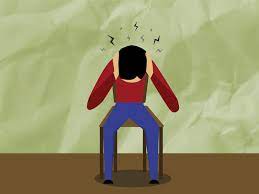Panic Attack Vs Anxiety Attack | 5 Ways To Deal With Them !
Sometimes panic attacks and anxiety attacks can be used interchangeably, although they show up differently from each other and often feel different. In this article, we detail the differences between Panic Attack Vs Anxiety Attack and how with 5 strategies we can deal with them effectively.
What Does an Anxiety Attack Feel Like?
The term ‘anxiety attack’ is not formally acknowledged as a mental health diagnosis, although it’s widely recognized that anxiety is a common symptom of many psychiatric disorders and a core component of anxiety disorders such as obsessive compulsive disorder (OCD), post-traumatic stress disorder (PTSD) and phobias. Anxiety is usually felt in response to a situation that feels threatening or stressful. It tends to build for a while, with symptoms sometimes persisting for months at a time. Anxiety can range in severity from mild to severe.
The symptoms of Anxiety Attack mostly include:
- Apprehension, worry and dread
- Feeling distressed
- Being restless and unable to sit still
- Disturbed sleep
- Irritability
What Does an Panic Attack Feel Like?
Panic attacks usually happen out of the blue with no clear triggers. They’re usually associated with a range of distressing symptoms that disrupt an individual’s ability to cope or even think clearly. In addition, physical symptoms, such as chest pain, breathing difficulties, hyperventilating and heart palpitations, tend to be much more intense in a panic attack than in someone experiencing anxiety.
The symptoms of Panic Attack mostly include:
- Excessive fear
- Fear of dying
- Fear of losing control
- Accelerated heart rates
- Heart palpitations
- Shortness of breath
- Pain in the chest
- Sweating
- Dry mouth
- Shaking
- Feeling faint or dizzy
- Tightness in the throat
Panic Attack Vs Anxiety Attack | Know The Differences
Understanding the differences when it comes to a panic attack vs anxiety attack can feel confusing since so many of the symptoms are very similar. But the truth is, there are a few key differences to know about the symptoms of anxiety and panic attacks that can help you determine which you might be having.
One of the main differences between a panic attack vs. anxiety attack is how they appear. An anxiety attack will start out gradually, building up over time. But a panic attack is usually more spontaneous, sometimes going from 0 to 10 in an instant.
The intensity of the symptoms give you the major key difference. Panic attacks symptoms tend to be much more intense and severe than anxiety attack symptoms
The onset of both conditions can be a determining factor on which you might be experiencing. Panic attacks will appear more spontaneously and suddenly. There often won’t be a slow build-up that results in the attack. Instead, they seem to come out of nowhere, so it can be difficult to pinpoint a specific cause.
Anxiety and panic attacks can have different duration periods. Chronic anxiety attacks tend to last a lot longer, and because of the gradual onset of symptoms, for the person experiencing it, they can feel like they’re going on forever. Panic attacks start and end quickly. The average panic attack lasts only about 10 minutes. Most, if not all, symptoms typically disappear as soon as the attack itself ends.
How to Calm Anxiety or Panic Attacks | 5 Ways To Deal With Them !
Knowing the differences between a panic attack vs. anxiety attack is the first step in being able to deal with them. Since, you have well understood them now, you might like to follow these 5 steps whenever you recognize the symptoms.
Psychotherapy can help better you understand your symptoms, develop ways to manage them, work through past pain, determine your path for the future, and gain a clearer perspective that will allow for a more hopeful outlook.
Acknowledging the situation and remembering that symptoms will soon pass can reduce anxiety and fear.
Difficulty breathing is among the most common and alarming symptoms of these attacks. Learning techniques to control breathing such as practicing breathing yoga actually helps.
Methods of relaxation, such as progressive muscle relaxation and guided imagery, can reduce feelings of panic and anxiety.
Mindfulness helps people stay grounded in the present moment. It can be especially beneficial for people with anxiety, who tend to worry about perceived and potential stressors.
Final Takeaway
It may be difficult to know whether what you’re experiencing is anxiety or a panic attack. Fundamentally, anxiety and panic attacks are distinct conditions but both can have an incredibly negative impact on individuals who struggle with them. Anxiety and panic attacks can potentially disrupt your everyday life. Whether you or a friend or loved one experiences them, know that help is available.
If you or a loved one are struggling with anxiety, contact the Substance Abuse and Mental Health Services Administration (SAMHSA) National Helpline at 1-800-662-4357 for information on support and treatment facilities in your area.
For more mental health resources, see National Helpline Database.
The sooner a person seeks help, the better the outcome !
Read also : The Premack Principle | Grandma’s rule ( https://thebrightdelights.com/the-premack-principle-grandmas-rule/ )
